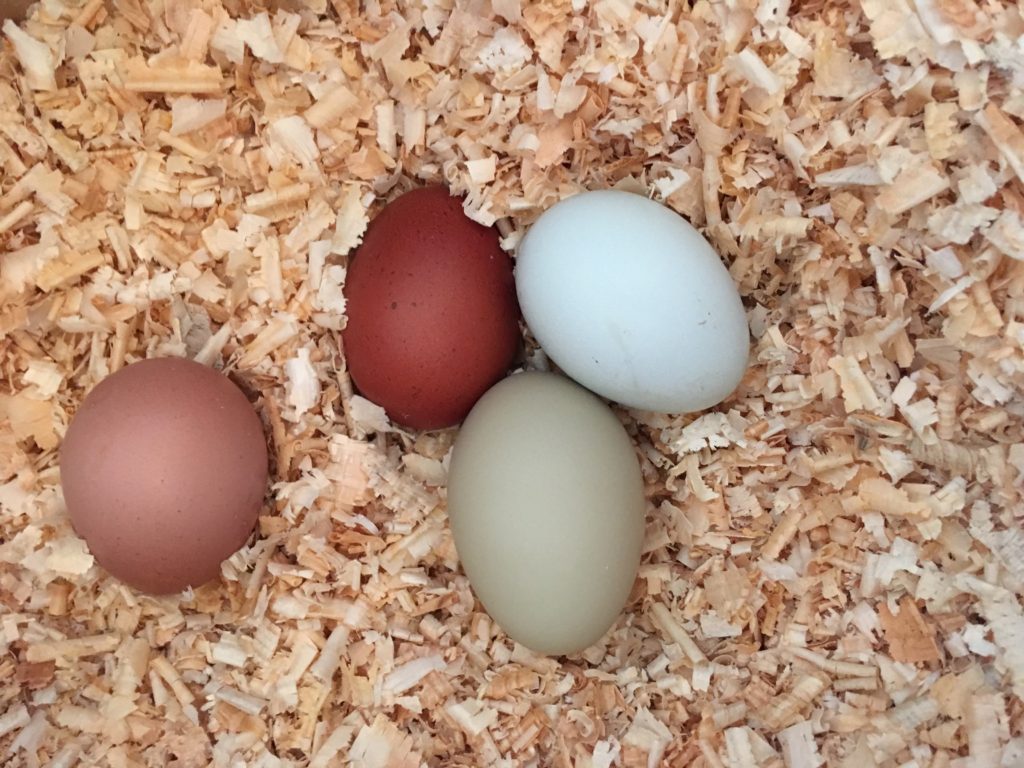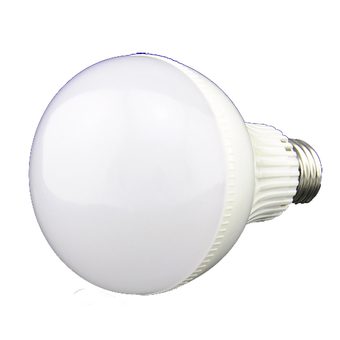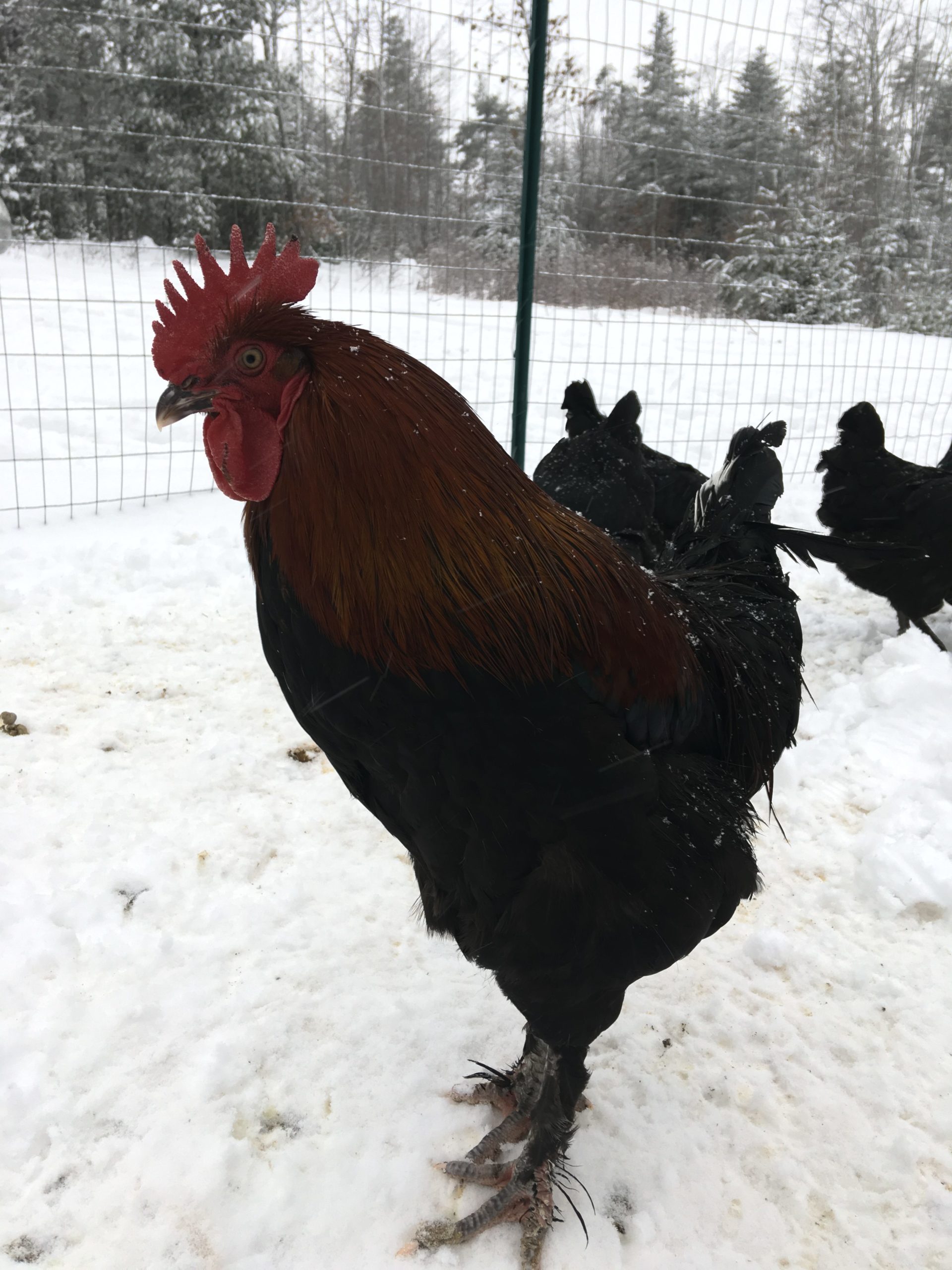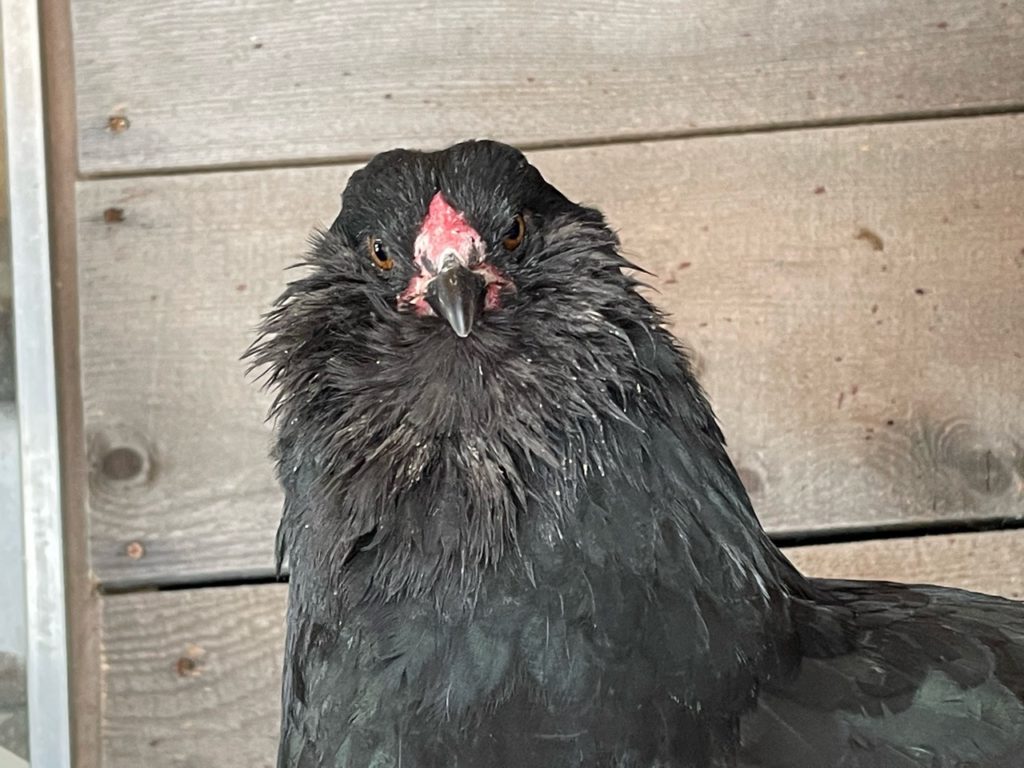LAST UPDATED JAN 6, 2017
If your chickens are anything like mine, they go on vacation near the winter solstice. The hens reduce egg output due to the shortening of daylight and colder temperatures as Maine plunges into the heart of winter. There are many measures an avid chicken owner can undertake to get more eggs in winter.
How Many Eggs Does a Chicken Lay?
The first thing to understand to get more eggs in winter: chickens are hard working creatures and deserve a little break. Modern chickens are descendants of jungle fowl from Southeast Asia that were caught and domesticated. They spread to nearly all points of the Earth through human trade and globalization.
Before chickens were domesticated: understanding the natural habits of chickens
These ancient, wild chickens only laid a dozen eggs during their annual breeding season. The rise of agriculture and animal husbandry gave us the modern chickens that are able to lay hundreds of eggs year. Better nutrition and rigorous selective breeding programs have spurred hens to mature faster and lay larger eggs more often, especially over the past century. Understanding where the chicken comes from and its preferred environmental conditions helps to explain why they are not into laying eggs in the depth of winter.

Laying and climate
Chickens lay the most eggs in Maine during the summer months. This is when the days are the longest and nights are the warmest. The hens are happy and triggered by instinct to lay eggs while the environment around them is most bountiful. They eat insects, frogs and seeds as they browse our yard and are as happy as a hen can get.
In April, they ramp up production until they have a molt in the fall. They still lay during the molt, especially when given protein-rich feed and highly nutritious treats during the molt. Then they are back at it until the snow rolls in.
Artificial lighting
For chicken keepers with power—who have no qualms about lighting up their coop like a poultry disco inferno—it is your best way to get more eggs in winter.
Mimic natural sunshine with a warm light color
Although any type of light will help to trick your hens into thinking the days are longer, a bulb with a natural light tone is best, not one of those weird blueish colors. The idea is to mimic sunshine. I have seen some sweet setups with Christmas lights that do the trick just fine—and are wicked cute. But I like to keep it simple, and string lights are hard to clean. I bet they peck at them too.
Beware of heat bulb danger!
Be sure to use a safe socket. A simple aluminum reflector works best to put the heat and light beam right where you want it. This will set you back $12 and provides great for your hens to get more eggs in winter.
Depending on how warm and airtight their coop is, you may want to add a bulb that puts off a little heat—not to be confused with one of those bright red bulbs known to be a fire hazard. Any bulb, whether it puts off heat or not, should be keep at a safe distance from your feather babies.
Secure your lamp from chicken destruction
Make sure they cannot shatter the bulb by knocking it over, perching on it, flying into it—or by any other chicken mode of destruction. Mine is attached to the roof rafter and has a cage around it that came with the clamp-lamp. Instead of just clamping it there, it’s attached with screws.
Focus on natural light first
Natural light might be hard to come by, but it’s still the best for your hens. This is the best option of old fashioned homesteaders or for those without power.
Does your chicken coop have windows?
Clean them up to let in better light. Every little bit counts!
How long are they outside?
Kick them out on warm days if they stay cooped up or perched for hours after they wake up. Try setting their food outside or toss a few treats out on the snow for them to peck at.
Clear corrugated roofing
When we build our coop we used greenhouse corrugated roofing. This makes the entire roof a window. The downside is it needs to be cleared from snow after each storm. If you want to use it, be sure to set a good pitch. Oh, and make sure to use a push broom instead of a roof rake—it will catch on the screws and is too rough. I cannot stress enough to attach it to twice as many rafters as you would any other roofing. If there is a high wind this stuff can shatter if not well attached. I recommend overlapping it a little extra, so keep that in mind when figuring out how much to purchase.
Consider your flock’s diet to get more eggs in winter
Eggs are mostly made of calcium. Layer pellets have calcium but are lower in protein. When you notice your hens going on strike, tell them it’s okay. Instead of continuing layer feed as usual add in some protein-rich grower for these two short weeks. Mix it in gradually until it’s half and half about one week in then wean them back off.
Save your shells
When they are back on their regular ho-hum layer diet try adding crushed shells to their feed. We save our shells in an old sauce can with holes punched in the sides. This can keeps them dry with ventilation until it’s full—which in our hungry home takes about a week and a half. Keep crushing them down to make more room. We even save shells from our incubator after the chocks hatch.

Use the top of your wood stove to dry them out periodically and kill off any bacteria. They can be set on a trivet or fire stone to be slowly heated. Alternatively, bake them in your oven at 250°f for half an hour until they shatter with ease. Careful not to burn them, it stinks. Once they are cooked, set them in a bowl to crush them with the bottom of a cup and mix then in with your hen’s food.
Oyster Shells Vs. Crushed Egg Shells
Chickens can also be fed oyster shells that are made for adding calcium and grit to their diet. But they are expensive, come in thick plastic packaging that is hard to repurpose and my hens found many of the bits too large. My hens like the shells better and they are free. Just start collecting them BEFORE your ladies take a holiday vacation.










